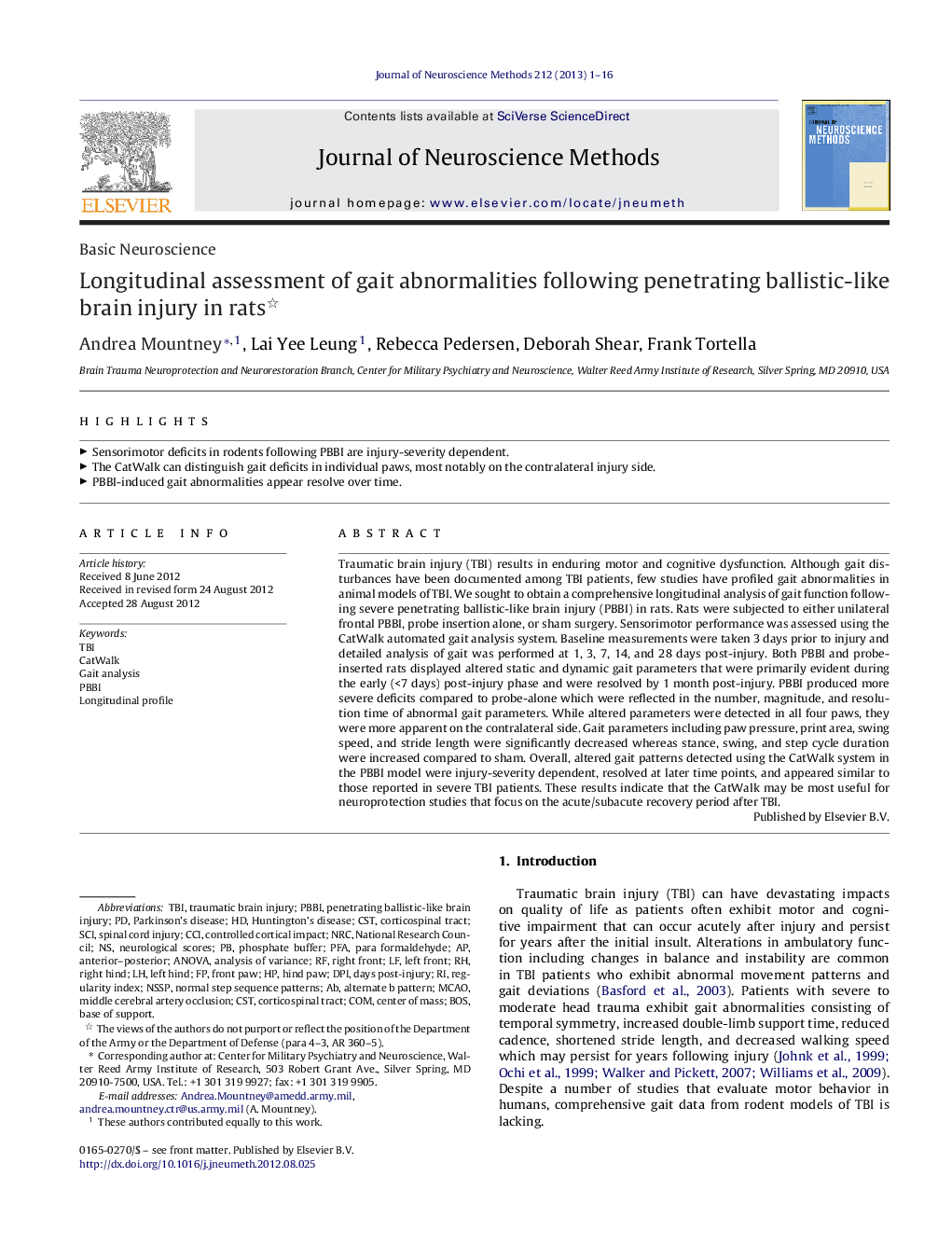| کد مقاله | کد نشریه | سال انتشار | مقاله انگلیسی | نسخه تمام متن |
|---|---|---|---|---|
| 4335254 | 1295141 | 2013 | 16 صفحه PDF | دانلود رایگان |

Traumatic brain injury (TBI) results in enduring motor and cognitive dysfunction. Although gait disturbances have been documented among TBI patients, few studies have profiled gait abnormalities in animal models of TBI. We sought to obtain a comprehensive longitudinal analysis of gait function following severe penetrating ballistic-like brain injury (PBBI) in rats. Rats were subjected to either unilateral frontal PBBI, probe insertion alone, or sham surgery. Sensorimotor performance was assessed using the CatWalk automated gait analysis system. Baseline measurements were taken 3 days prior to injury and detailed analysis of gait was performed at 1, 3, 7, 14, and 28 days post-injury. Both PBBI and probe-inserted rats displayed altered static and dynamic gait parameters that were primarily evident during the early (<7 days) post-injury phase and were resolved by 1 month post-injury. PBBI produced more severe deficits compared to probe-alone which were reflected in the number, magnitude, and resolution time of abnormal gait parameters. While altered parameters were detected in all four paws, they were more apparent on the contralateral side. Gait parameters including paw pressure, print area, swing speed, and stride length were significantly decreased whereas stance, swing, and step cycle duration were increased compared to sham. Overall, altered gait patterns detected using the CatWalk system in the PBBI model were injury-severity dependent, resolved at later time points, and appeared similar to those reported in severe TBI patients. These results indicate that the CatWalk may be most useful for neuroprotection studies that focus on the acute/subacute recovery period after TBI.
► Sensorimotor deficits in rodents following PBBI are injury-severity dependent.
► The CatWalk can distinguish gait deficits in individual paws, most notably on the contralateral injury side.
► PBBI-induced gait abnormalities appear resolve over time.
Journal: Journal of Neuroscience Methods - Volume 212, Issue 1, 15 January 2013, Pages 1–16